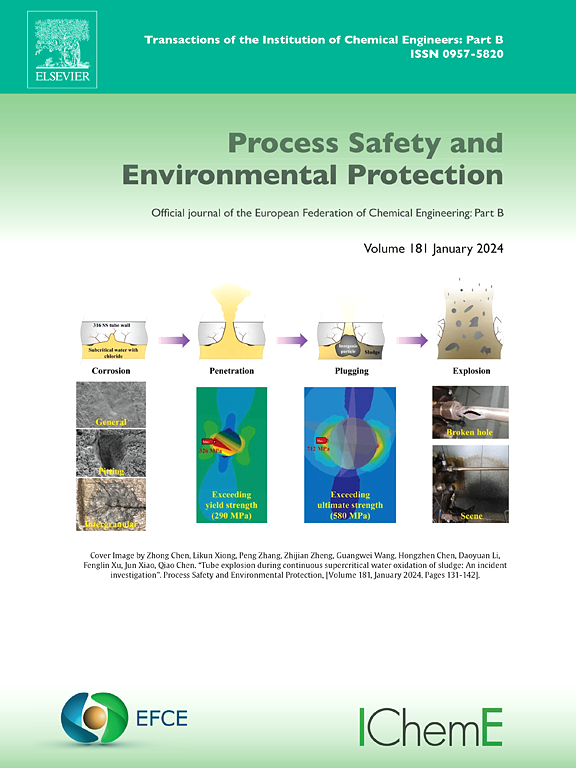用于预测污泥焚烧产生的氮氧化物排放浓度的混合机器学习模型
IF 6.9
2区 环境科学与生态学
Q1 ENGINEERING, CHEMICAL
引用次数: 0
摘要
本文章由计算机程序翻译,如有差异,请以英文原文为准。
A hybrid machine learning model for NOx emission concentration prediction from sludge incineration
Accurate prediction of NOx emission concentration is crucial for optimizing combustion processes and enhancing flue gas treatment in incineration systems. However, the traditional prediction models that employ data-driven methods face significant challenges due to insufficient input feature information, as well as low computational efficiency and robustness. These limitations hinder the accurate real-time prediction of NOx emission concentration. To address this issue, this paper proposes an advanced hybrid model for predicting NOx emission concentration. Initially, static and dynamic flame features are extracted from flame images and integrated with Distributed Control System (DCS) parameters to serve as the model's input features, while the NOx emission concentration constitutes the model's output feature. Subsequently, the lag time between NOx emissions and the input features is determined using mutual information (MI), followed by data reorganization to develop various predictive models for NOx emission concentration. Finally, the extremely randomized trees (ERT) model, demonstrating superior performance, is further optimized using Bayesian optimization with tree-structured Parzen estimators (BO-TPE). Experimental results indicate that the ERT model optimized with BO-TPE outperforms state-of-the-art models, making it suitable for online optimization of industrial pollutant control and potentially contributing to cleaner production.
求助全文
通过发布文献求助,成功后即可免费获取论文全文。
去求助
来源期刊

Process Safety and Environmental Protection
环境科学-工程:化工
CiteScore
11.40
自引率
15.40%
发文量
929
审稿时长
8.0 months
期刊介绍:
The Process Safety and Environmental Protection (PSEP) journal is a leading international publication that focuses on the publication of high-quality, original research papers in the field of engineering, specifically those related to the safety of industrial processes and environmental protection. The journal encourages submissions that present new developments in safety and environmental aspects, particularly those that show how research findings can be applied in process engineering design and practice.
PSEP is particularly interested in research that brings fresh perspectives to established engineering principles, identifies unsolved problems, or suggests directions for future research. The journal also values contributions that push the boundaries of traditional engineering and welcomes multidisciplinary papers.
PSEP's articles are abstracted and indexed by a range of databases and services, which helps to ensure that the journal's research is accessible and recognized in the academic and professional communities. These databases include ANTE, Chemical Abstracts, Chemical Hazards in Industry, Current Contents, Elsevier Engineering Information database, Pascal Francis, Web of Science, Scopus, Engineering Information Database EnCompass LIT (Elsevier), and INSPEC. This wide coverage facilitates the dissemination of the journal's content to a global audience interested in process safety and environmental engineering.
 求助内容:
求助内容: 应助结果提醒方式:
应助结果提醒方式:


